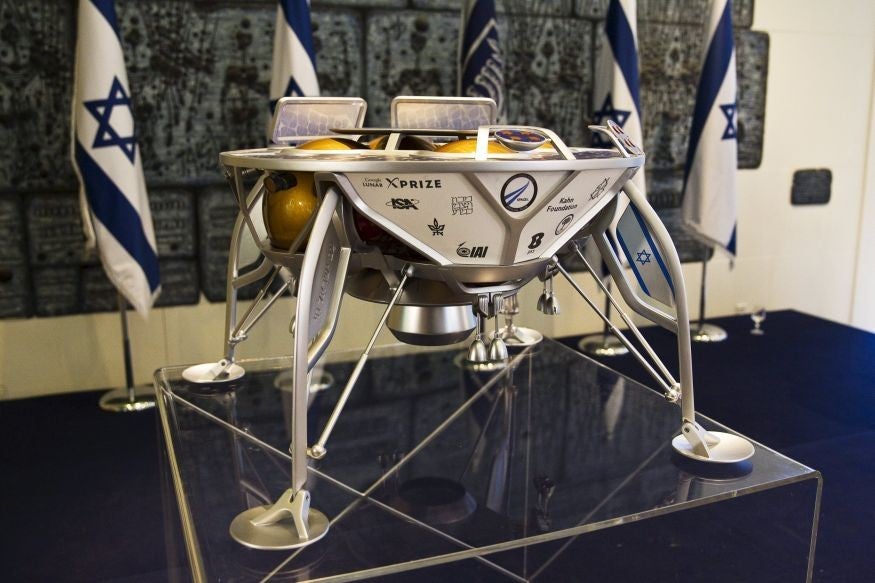Israeli team set for a rocket launch in Google-sponsored $20m race to the moon
Israeli team SpaceIL is the first to secure a launch contract in Google's $20 million XPRIZE race to the Moon

An Israeli team competing in a Google-sponsored race to the moon has made a giant leap towards their goal - by signing up with space company SpaceX for a rocket launch.
The new deal puts them at the front of the pack, and leaves them on target for a launch in late 2017.
The Google Lunar XPRIZE was announced in September 2007, and requires the wining team to successfuly launch, land and operate a rover on the Moon, which will have to travel more than 500 metres and transmit back high-definition images and video.
The team who gets there first will be awarded with $20 million (£13 million), with a possible extra $5 million (£3.3 million) in bonuses for teams whose rovers travel long distances, capture images of man-made objects, or survive a night on the Moon.
The Israeli team, SpaceIL, are the first team in the competition to have their launch agreement reviewed, verified and accepted by XPRIZE, the larger group overseeing the competition.
Another team, Moon Express, from California's Silicon Valley, signed a contract with Lockheed Martin-backed Rocket Lab, but they haven't had their agreement approved by XPRIZE yet.
XPRIZE President Bob Weiss said: "The magnitude of this achievement cannot be overstated."
"This is the official milestone that the race is on... They've lit the fuse, as it were, for their competetive effort."
Eran Privman, CEO of SpaceIL, said the main hurdle was finding a ride to space without government funding.
But because his team's rover is so much smaller than its competitors', at around 1.5 metres tall and wide, the SpaceX rocket will also be able to carry 20 small satellites whose fares will help to cover the costs.
There's still a lot of work left for SpaceIL - they now need to manufacture hardware that can fit into the rocket, allowing it be shipped to the US for launch.
The mission is scheduled for late 2017, just before the contest deadline.
Once exiting the rocket in space, the craft will make its journey to the Moon, potentially becoming the first privately-built and funded craft to land on the Moon.
Subscribe to Independent Premium to bookmark this article
Want to bookmark your favourite articles and stories to read or reference later? Start your Independent Premium subscription today.

Join our commenting forum
Join thought-provoking conversations, follow other Independent readers and see their replies